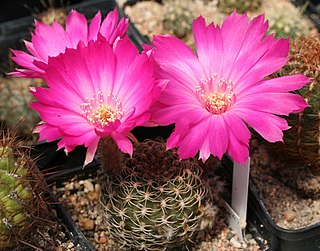
Lobivia backebergii is a species of flowering plant in the cactus family Cactaceae, native to eastern Bolivia and southern Peru.

Soehrensia thelegona is a species of cactus in the Soehrensia genus.

Acanthocalycium thionanthum is a species of Acanthocalycium from Argentina.

Weberbauerocereus weberbaueri is a species of Weberbauerocereus from Peru.

Soehrensia formosa, is a species of Echinopsis found in South America. In north-western Argentina, Bolivia and northern Chile. First published in Cactac.: Handb. Kakteenk. 3: 1678 in 1959.

Echinopsis densispina, is a species of Echinopsis found in Argentina.

Echinopsis aurea, is a species of Echinopsis found in Argentina.
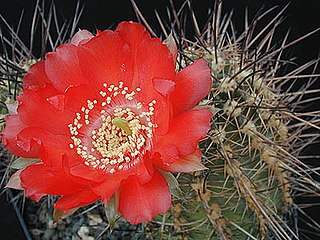
Echinopsis haematantha, is a species of Echinopsis found in Argentina and Bolivia.

Soehrensia huascha, is a species of Soehrensia in the Cactaceae family, found in north western Argentina. First published in Cactaceae Syst. Init. 29: 5 in 2013.

Lobivia pampana is a species of Lobivia found in Peru.

Lobivia tiegeliana, is a species of Lobivia found in Argentina and Bolivia.
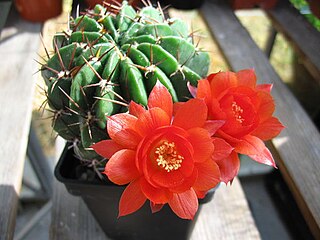
Lobivia maximiliana, is a species of Lobivia found in Bolivia and Peru.

Haageocereus pseudomelanostele is a species of Haageocereus found in Peru
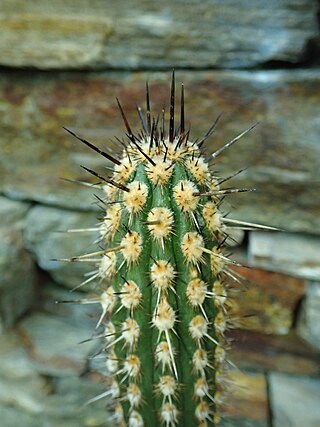
Weberbauerocereus cephalomacrostibas is a species of cactus in the family Cactaceae. It is found in Arequipa Department, Peru and consists of 2 subpopulations.

Cleistocactus buchtienii is a species of columnar cacti in the genus Cleistocactus.

Leucostele deserticola is a species of cactus native to South America.

Haageocereus versicolor is a species of Haageocereus found in Peru.
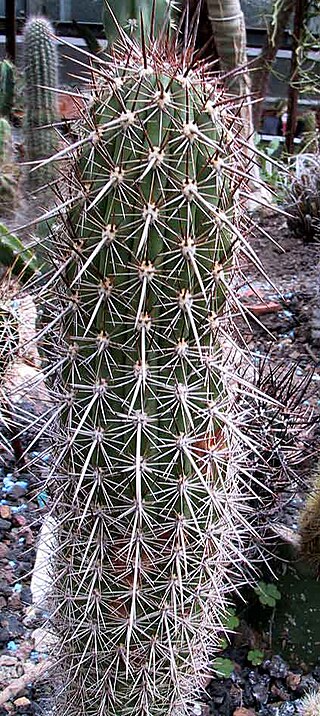
Haageocereus platinospinus is a species of Haageocereus found in Peru.

Echinopsis marsoneri is a species of cactus from Argentina and Bolivia.
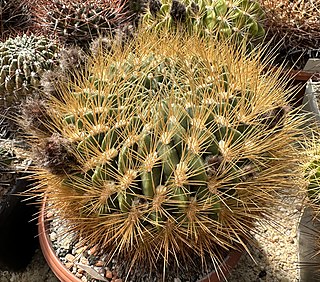
Lobivia chrysochete is a species of Lobivia found in Bolivia and Argentina.





















